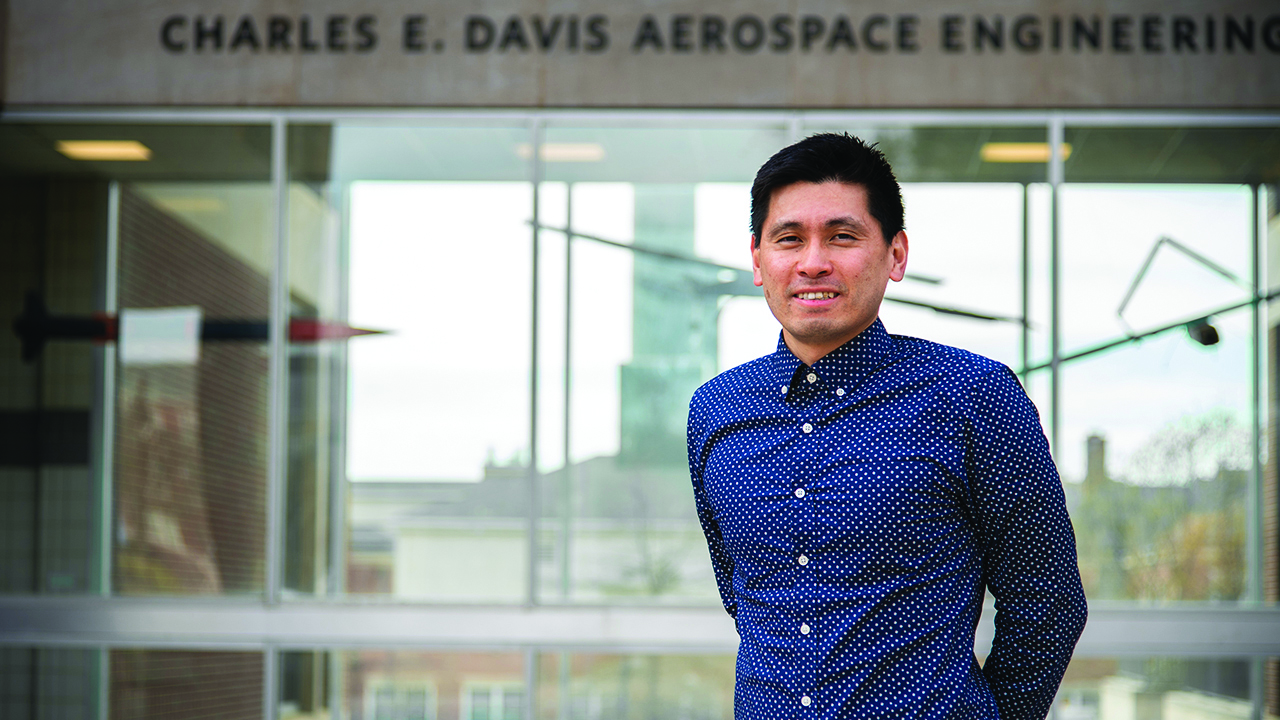Aerospace engineering professor authors book on mission to asteroid Ryugu
Published: May 23, 2022 8:15 AM
By Joe McAdory
Japanese space craft Hayabasa2 spent about 18 months collecting samples on asteroid Ryugu, a 900-meter sand castle as it hurtled through space. What challenges were faced? What was the purpose of the Japanese’s mission? What lessons were learned that could be applied to future expeditions?
Masatoshi Hirabayashi, assistant professor in aerospace engineering, answers these questions in his book, “Hayabusa2 Asteroid Sample Return Mission: Technological Innovation and Advances.”
The book:
- Covers technologies necessary for space exploration missions
- Provides a unique focus on small body exploration missions
- Covers landing and impact experiments during the proximity operations of Hayabusa2
“Asteroid sample missions have become popular over the past decade and will be more in the next decades,” said Hirabayashi, who directs Auburn University’s Space Technology and Application Research (STAR) lab and recently teamed with NASA’s Planetary Defense mission (DART) to smash the binary near-Earth asteroid Didymous and NASA’s Artemis rover mission (VIPER) to explore samples on the lunar South Pole. “Before this book, there was no documented collection of engineering technologies, particularly for asteroid missions. Summarizing what we learned from the mission – the advances, challenges and how we solve those – this can be vital information for future generations … those who want to send spacecraft to asteroids.”
Hayabusa2 left Earth for Ryugu in 2014 and arrived there in 2018. After about 18 months of exploration, it returned samples to Earth in 2020. But why is collecting data from this asteroid so important?
“Ryugu is a carbonaceous asteroid, which is considered to be very primitive, including water and other organic materials,” said Hirabayashi, who noted the book was written for a college level audience. “Water-rich and organic materials sampled from this asteroid are a source of life on Earth. Obtaining these samples from the asteroid was critical to better understanding the origin of the Earth … even us.”
The purpose of the mission was to collect samples. The purpose of the book, as Hirabayashi noted, was to document challenges along the way.
“Space engineering is a system of engineering elements covering so many different disciplines and technologies,” he said. “For a successful mission, like this one, it requires a team to harmonize those different elements. This book covers all the required technologies for the mission.”
One example includes guiding/controlling the space craft near the asteroid on approach by use of advanced thrusters and navigation technologies.
“Once the spacecraft has arrived at an asteroid, we have many unpredicted challenges but need to handle complex operations near it without hassles,” Hirabayashi said. “We must identify the potential risks the spacecraft must avoid immediately. A tiny operational failure may lead to fatal issues, ending the mission, which has usually taken a decade, at least, to be designed and built.”
The book can be purchased through Elsevier and/or Amazon via paperback and Kindle.
Media Contact: , jem0040@auburn.edu, 334.844.3447
Masatoshi Hirabayashi

